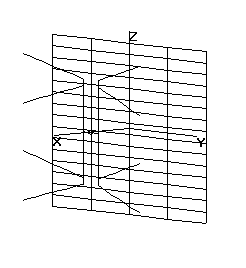
Modelling the Hoverman Antenna with 4NEC2
When a link was provided to the second Hoverman antenna patent #3,148,371, I modelled it using Arie’s 4NEC2 software, with some variations suggested by the DigitalHome.ca gang.

As a
baseline, I already had a model for the DB2
bowtie antenna, so I ran this simulation first..
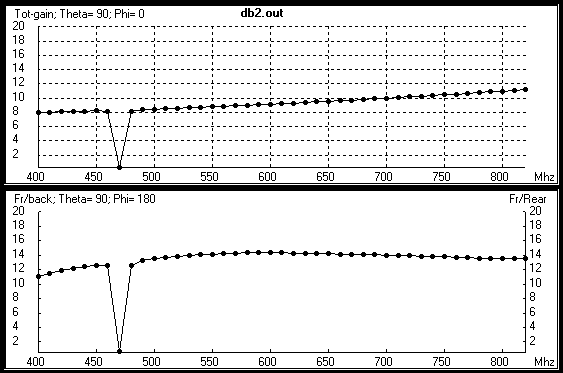
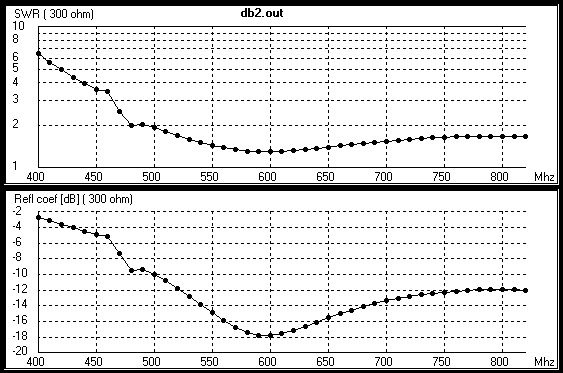
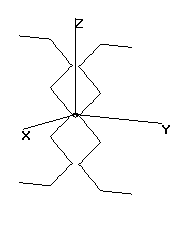
Next, I developed a NEC input file, following the instructions in the patent document, without any reflectors.
I ran two simulations
for 450 MHz to 800 MHz and 50 Mhz to 220 MHz.
.
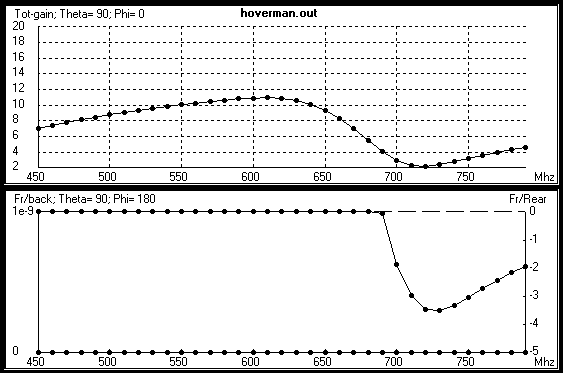
As you can see, without any reflector, the Hoverman is bi-directional, with a peak gain of 11 dB.
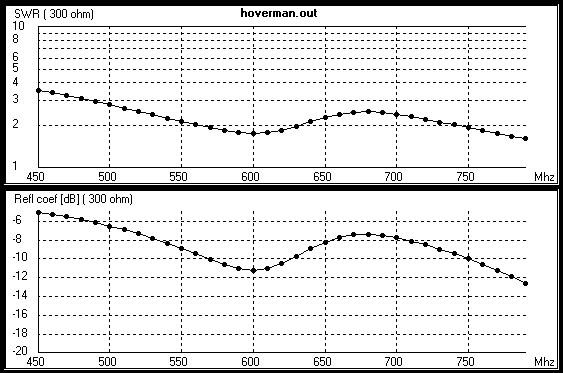
Then I ran the model without reflectors from 50 MHz to 220 MHz.
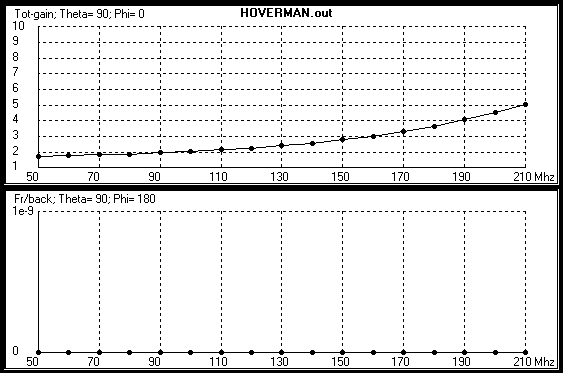
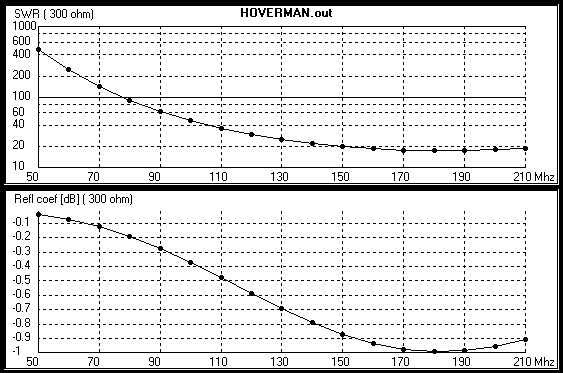
As you can see, there is some gain at VHF, but not much more than a simple dipole. I suspect the Hoverman may have both horizontal and vertical polarization at VHF, but didn't investigate further.
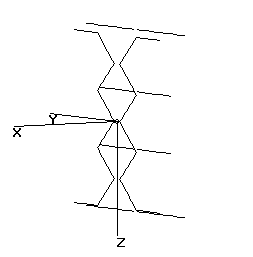
Next, I developed a NEC input file, with half-wave reflectors, per fig.2 of the patent document
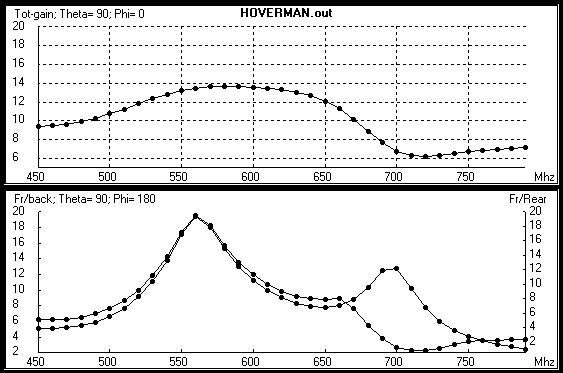
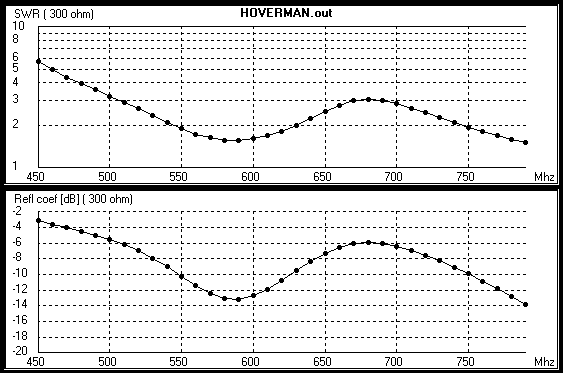 As you can see, this is a very useable antenna for the lower UHF channels.
As you can see, this is a very useable antenna for the lower UHF channels.

Encouraged by the
the great improvement to the front-to-back ratio by introucing half-wave elements, I replaced
the resonant elements with a screen reflector. I tend to use very few segments in my screen
reflectors to speed calculations and, although it shouldn't cause significant errors, it does cause
4NEC2 to generate warnings.
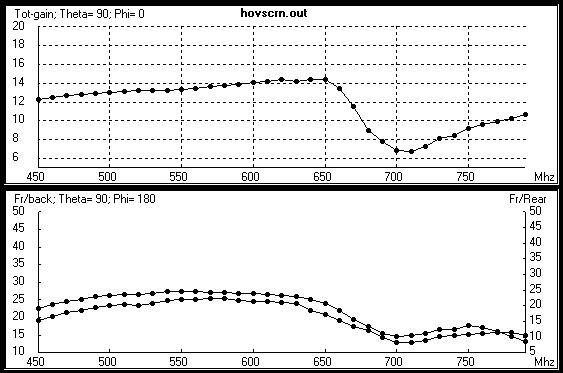
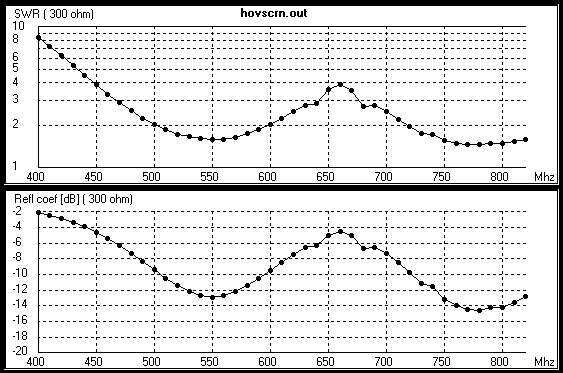
4NEC2 is available from Ari's website.
Feel free to download the NEC input files for these antennas and try it yourself.
UHF Hoverman with rod reflectors.
UHF Hoverman with screen reflector.
Autofils, one of the members of Digitalhome.ca, took the NEC file for the original Hoverman antenna and made some nice improvements to the original design, resulting in lower SWR and more constant gain. His second iteration provides for improved VHF Ch 7 reception.
Improved UHF Hoverman by Autofils.
KQ6QV uses NEC 4 to model a number of commercially-available antennas on his webpage